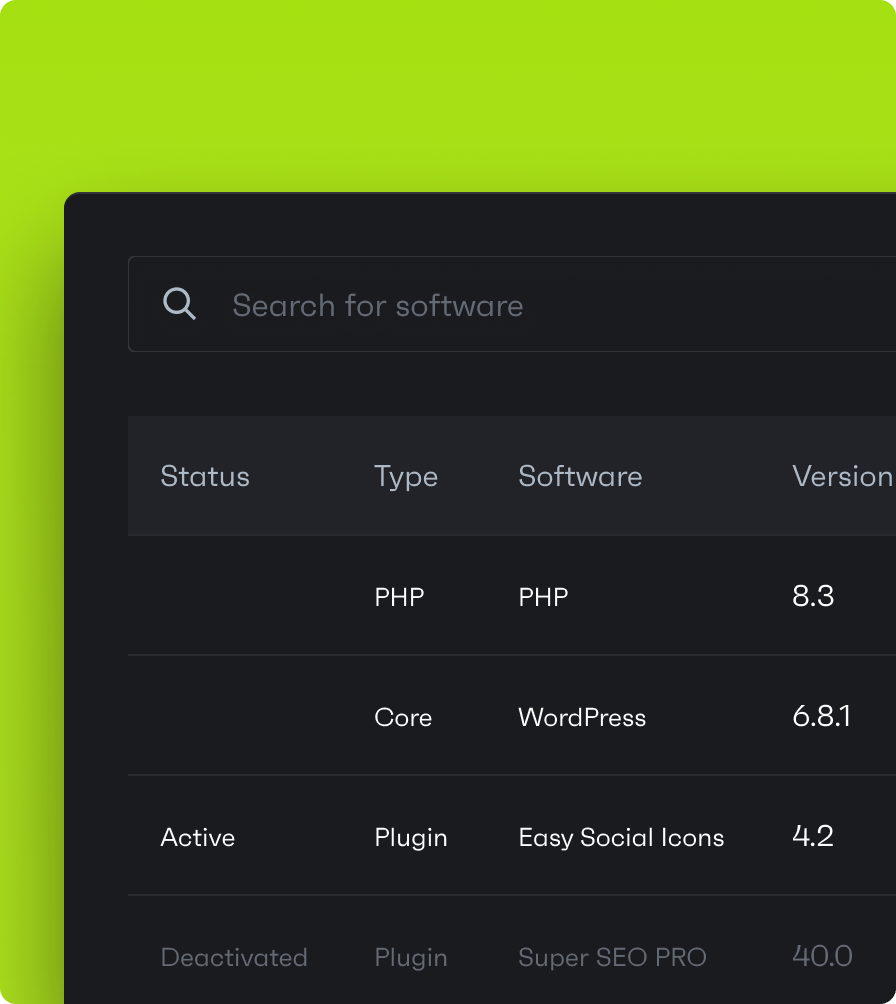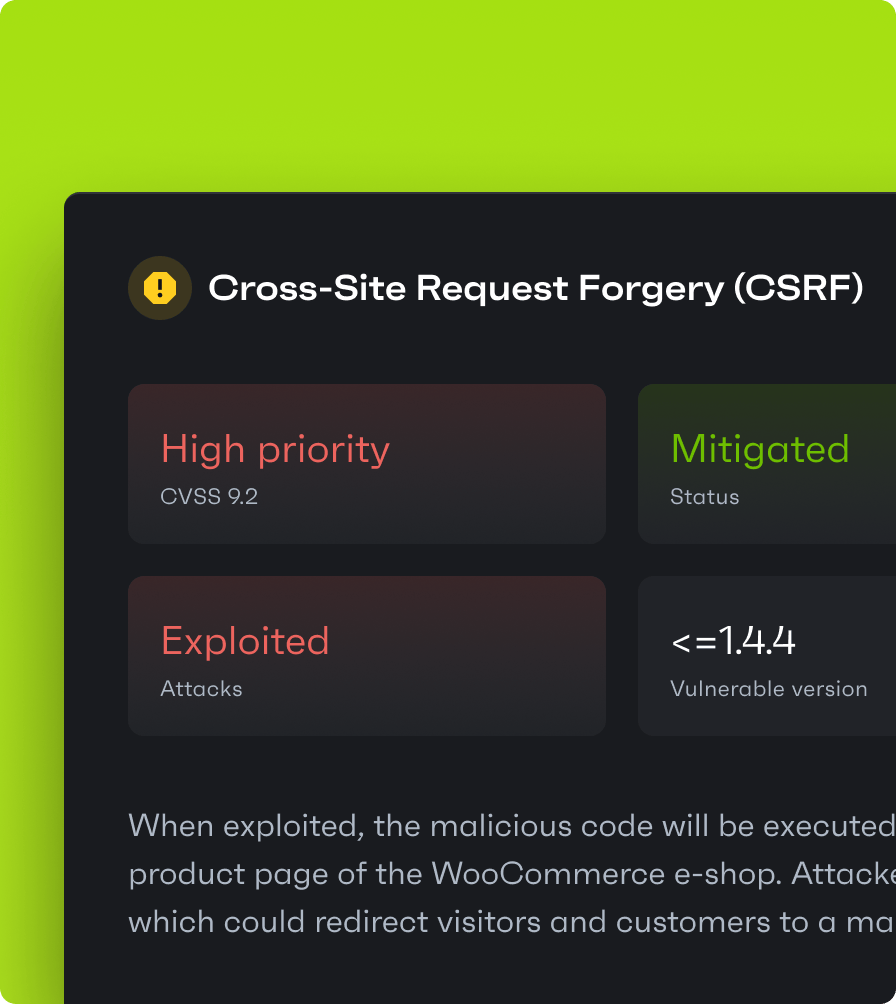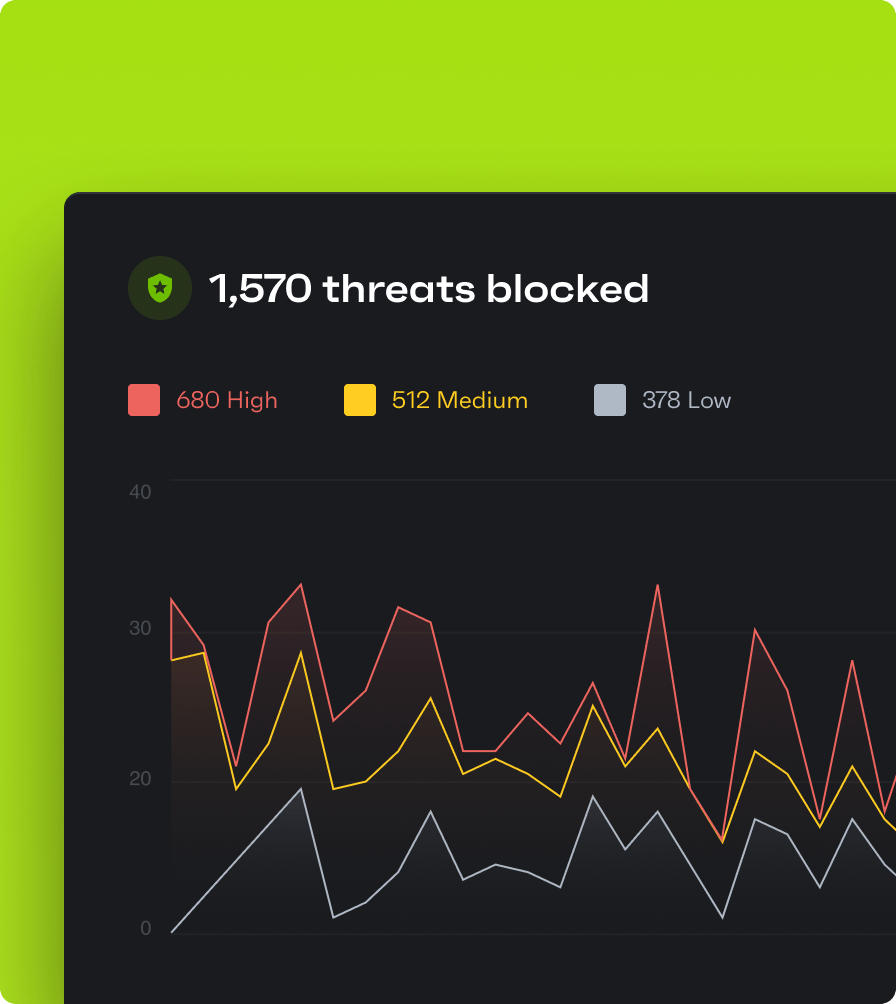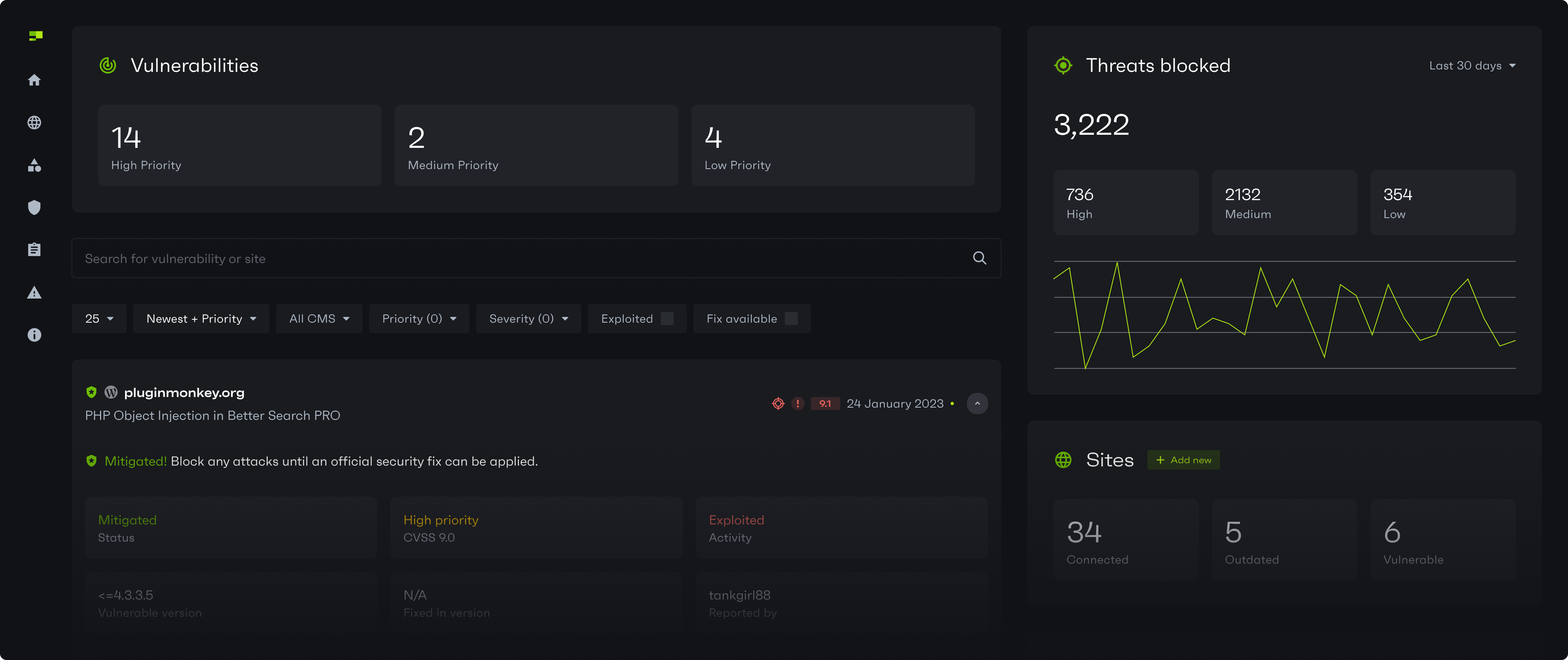The fastest vulnerability mitigation for WordPress
bye-bye cleanups
Did you know that, in 2024, 33% of all vulnerabilities in the WordPress ecosystem received no fix from the developer? Patchstack will protect you.
first to secure 600 plugins' users
we manage security for 600 plugins
 WP Bakery
WP Bakery
 MainWP
MainWP
 Slider Revolution
Slider Revolution
 Visual Composer
Visual Composer
 WP Rocket
WP Rocket
 WP Bakery
WP Bakery
 MainWP
MainWP
 Slider Revolution
Slider Revolution
 Visual Composer
Visual Composer
 WP Rocket
WP Rocket
 WP Bakery
WP Bakery
 MainWP
MainWP
 Slider Revolution
Slider Revolution
 Visual Composer
Visual Composer
 WP Rocket
WP Rocket
 WP Bakery
WP Bakery
 MainWP
MainWP
 Slider Revolution
Slider Revolution
 Visual Composer
Visual Composer
 WP Rocket
WP Rocket
 WP Bakery
WP Bakery
 MainWP
MainWP
 Slider Revolution
Slider Revolution
 Visual Composer
Visual Composer
 WP Rocket
WP Rocket
 WP Bakery
WP Bakery
 MainWP
MainWP
 Slider Revolution
Slider Revolution
 Visual Composer
Visual Composer
 WP Rocket
WP Rocket
Patchstack neutralizes vulnerabilities before they can be exploited
Patchstack combines deep application visibility (SCA), threat intelligence (TI) and context-aware prioritization (KEV)
No code changes that break your websites
No false positives or tooling conflicts
Zero-click fixes with automated rules deployment
New proactive approach
A vulnerability is detected on the website
A rule is auto-triggered only on-demand
The vulnerability is secured against attacks
User resolves the vulnerability by updating to the patched version when convenient
Old reactive approach
The website becomes vulnerable
The website is attacked and compromized
The website needs to be manually remediated
Website can be re-compromized until resolved
“The most exciting company in the WordPress security space.”
Security finally meets simplicity
Vulnerabilities in open-source are publicly known and easily targeted in large-surface attacks. Patchstack mitigates threats in 3 easy steps:
Analysis SCA

Forget scans! By performing Software Composition Analysis (SCA), Patchstack has real-time visibility into what components the website is made of, enabling precise and proactive security.
Prioritization KEV

No more alert fatigue! By continuously monitoring 11,000 mitigation rules across the entire Patchstack network, we maintain real-time visibility into Known Exploited Vulnerabilities (KEVs), allowing us to accurately identify and prioritize the most critical vulnerabilities.
Mitigation

As the largest processor (CNA) of open-source vulnerability intelligence, we are the first to detect and mitigate new vulnerabilities. Patchstack bypasses SDLC and delivers conflict-free protection with no code changes or false positives.



Developer
Websites
Monthly, billed annually
$89
Best for professionals and agencies who build and maintain websites that need uncompromized security.
Get first month free- 3 seats
- Protection up to 48h in advance
- Rapid mitigation without changing code
- API integrationsNEW
- Remote software management
- Remote security hardening
Enterprise
Best for businesses who require advanced security, maintain high profile websites, compliance, and security at scale.
Request quoteWebhost? Extend your hosting platform with integrated vulnerability mitigation.
Learn moreLooking for Enterprise-level volumes, SLA, DPA?
Pricing and featuresWith vulnerabilities being weaponized in minutes, being first really does matter
Patchstack processes the most security vulnerabilities globally and protects you up to 48h before public disclosure
#1
Global processor (CNA) of vulnerability intelligence
51%
Of all 2024 WordPress security disclosures
trusted security partner for

Protection modules make WordPress security easy
Protect websites from takeover, defacement, malware injection, ransomware, SEO spam, traffic redirection, SEO ranking drops, Google penalties, and more.
RapidMitigate
11,478 highly targeted rules block attacks against vulnerabilities in software.
Hardening
Additional protection rules to block common malicious requests against WordPress.
IP Blocklist
Block IPs known for attacks and contribute threat data back to other users.
Build your own workflow using API
Deliver monthly security reports, manage vulnerabilities within your existing dashboard, block attackers at the network level via DNS firewall, sync data with Enterprise SIEM/SOC tools, and build powerful automations.
Don’t just take our word for it
An excellent service backed by a company that contributes back to the WordPress ecosystem.
Amazing plugin, you really will not find a better offer on the web that also has reasonable pricing.
It simply works perfectly in the background. The pricing structure is reasonable and developer-friendly.
Patchstack is a must have for security. Their support is awesome too!
The service has been absolutely outstanding. They are passionate about the community they serve.
Been using Patchstack since 2018 (when it was named differently), peace of mind for many years.
Patchstack gives me 100% peace of mind. I don’t need to worry about vulnerabilities of unupdated sites.
We’ve been with Patchstack for a LONG time. Has always done its job seamlessly and without fail.
As a website developer, PatchStack is a critical part of my security protocol for any site that I build.
Protect your WordPress websites from vulnerabilities
Developer
Websites
Monthly, billed annually
$89
Best for professionals and agencies who build and maintain websites that need uncompromized security.
Get first month free- 3 seats
- Protection up to 48h in advance
- Rapid mitigation without changing code
- API integrationsNEW
- Remote software management
- Remote security hardening
Enterprise
Best for businesses who require advanced security, maintain high profile websites, compliance, and security at scale.
Request quoteWebhost? Extend your hosting platform with integrated vulnerability mitigation.
Learn moreLooking for Enterprise-level volumes, SLA, DPA?
Pricing and featuresWhat the FAQ
Patchstack partners with many hosting companies that offer vulnerability alerts and real-time protection. Please contact your hosting company's support to see if they offer Patchstack protection and if that option is more affordable for you.
Attackers automatically target all websites to build large bot nets to perform more complex attacks against lucrative targets. Even a basic website gives attackers one more node for future attacks. We believe better web security is a community effort.
Since Patchstack is focused on prevention in the first place, it does not scan your files like a malware scanner and won't help you in finding existing malware on your website. We recommend reaching out to your hosting provider or a professional.
Malware is most commonly injected by exploiting security vulnerabilities. Patchstack detects those vulnerabilities and automatically applies highly targeted mitigation rules that provide highly targeted, lightweight and effective way to hold off attacks to prevent any malware to get inside.
Malware scanners on the other hand scan for already injected malware which means the website has already been compromised and infected which also requires a thorough clean-up. While having regular malware scans is important to cover your back, it’s always better to prevent malware infections in the first place.
Regular firewalls aren't effective against vulnerability exploits, because such attacks rely on logic mistakes in your plugins and themes. Patchstack’s real-time protection fills in gaps that other tools miss, so you get specialized protection at the most commonly compromised level.
Reduce the high costs of downtime and hack cleanups. Stay proactive and protect your sites with Patchstack!
Patchstack runs several tasks on each page load but based on tests from us and from our customers we have seen that Patchstack does not affect your website's performance in any significant or noticeable way. In fact, a test done by one of our users indicated that Patchstack is up to 10x lighter than competing security services.
The Patchstack plugin can help, but patching is up to you. The plugin will inform you if your website(s) are running any known insecure components and allow you to be sure your sites are running secure versions before your test or auditing date.

Still have questions? Reach out to Sander via live chat.













